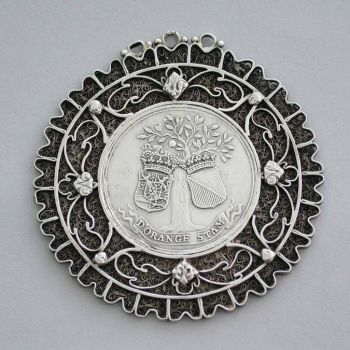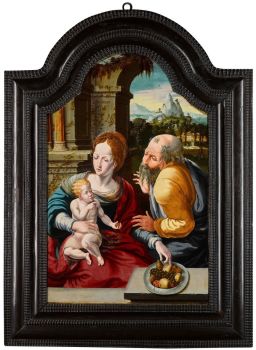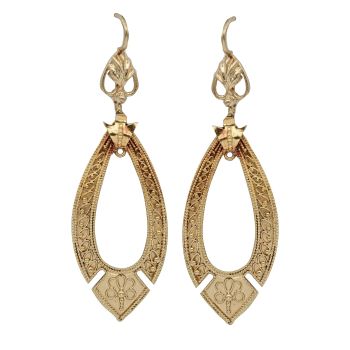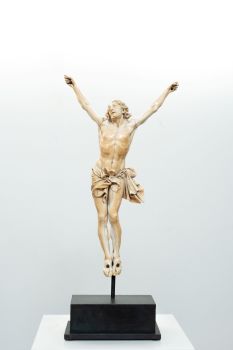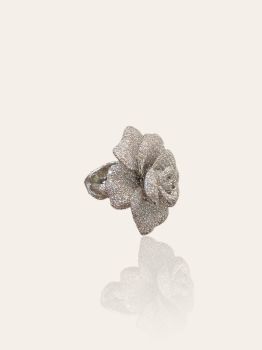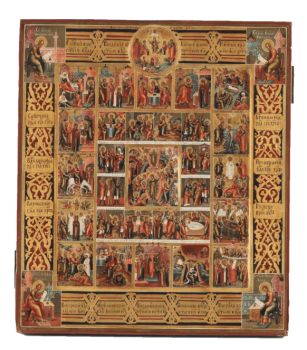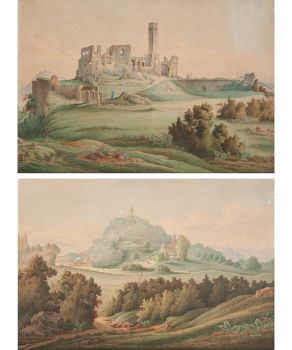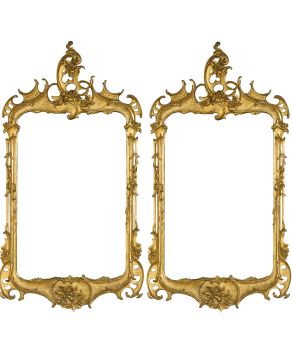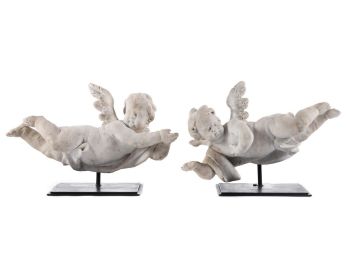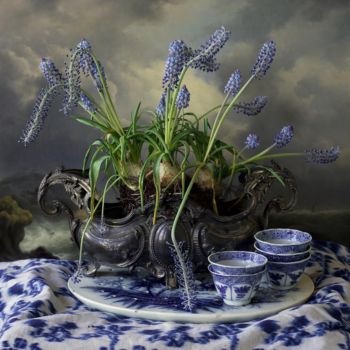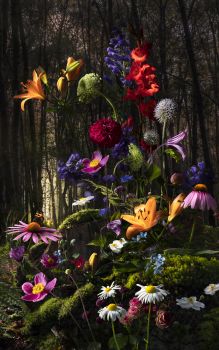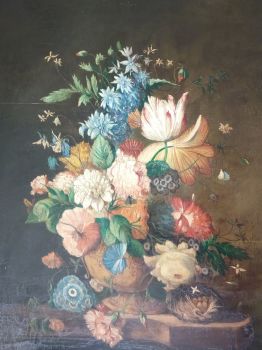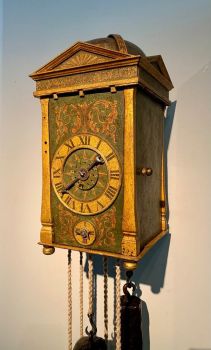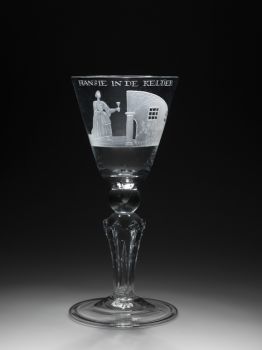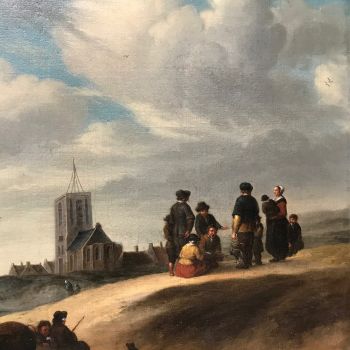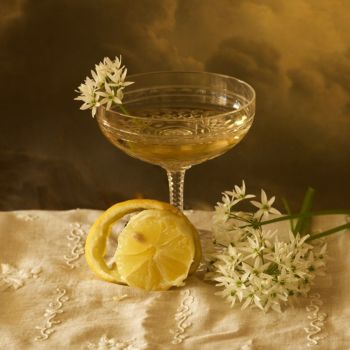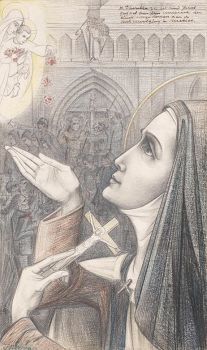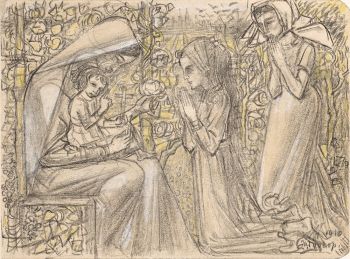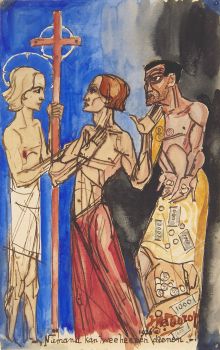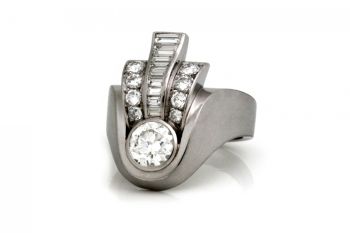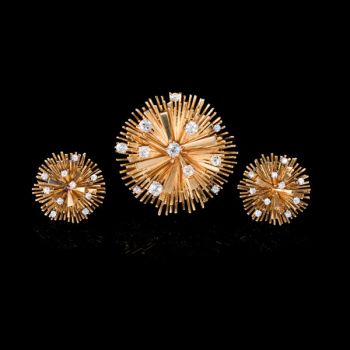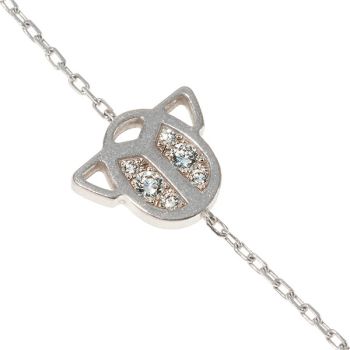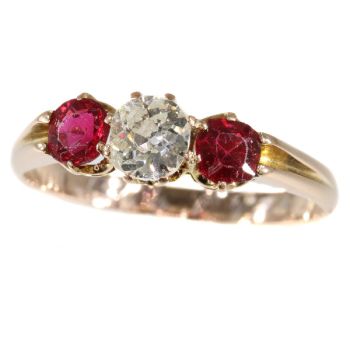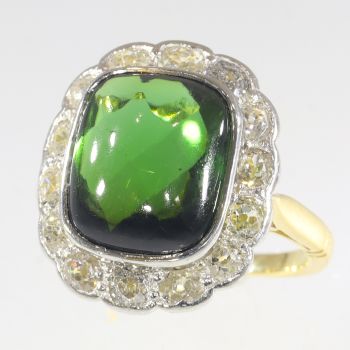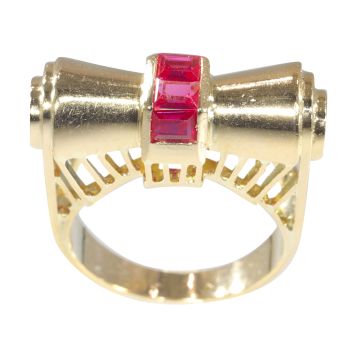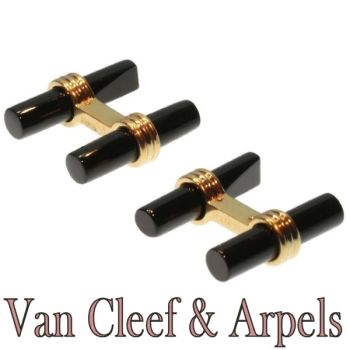1750s Rococo Silver Cross: Artistry in Jewellery 1750
Onbekende Kunstenaar
Adin Fine Antique Jewellery
- Over kunstwerk
A vintage silver cross pendant from around 1750 showcases the ornate Rococo design. Adorned with fifteen rose cut diamonds and senailles, each diamond is set to emphasise its radiance. Uniquely, the reverse side is treated with fire-gilding, a historictechnique intended to prevent tarnishing against skin and fabric, highlighting the piece’s practical and artistic heritage. This pendant is a testament to the sophisticated artistry of the mid-18th century, presenting a piece that resonates with theelegance and charm valued by aficionados of antique jewellery.
Antique jewelry object group
cross pendant
Condition
In very good condition, considering its age
more info on our condition scale
Country of origin
unknown
Style
Rococo - Rococo (less commonly roccoco) also referred to as "Late Baroque" is an 18th century style which developed as Baroque artists gave up their symmetry and became increasingly more ornate, florid, and playful. Rococo rooms were designed as totalworks of art with elegant and ornate furniture, small sculptures, ornamental mirrors, and tapestry complementing architecture, reliefs, and wall paintings. It was largely supplanted by the Neoclassic style. In 1835 the Dictionary of the French Academystated that the word Rococo "usually covers the kind of ornament, style and design associated with Louis XV's reign and the beginning of that of Louis XVI". It includes therefore, all types of art produced around the middle of the 18th century inFrance.
See also: Rococo
more info on styles
Style specifics
Rococo is a style of decoration that followed, c.1730, the baroque style in France (where it was also called rocaille), the principal features of which are asymmetry of ornament and a repertoire consisting to a considerable extent of rockwork, shells,flowers, foliage, and scrollwork. It was developed in France under Louis XV, 1715-74, and spread to Italy, Germany, and Austria and to a lesser extent to England.
Period
ca. 1750
Events & facts of this era, poetry of this era, fashion of this era.
Source of inspiration
Christianity
Theme
Cross - The cross is one of the most ancient human symbols, and is used by many religions, such as Christianity. It is frequently a representation of the division of the world into four elements (or cardinal points), or alternately as the union of theconcepts of divinity, the vertical line, and the world, the horizontal line. (from: Wikipedia)
Material
Silver with gilded back
more info on precious metals
Technique
The rose cuts are set on foil. This is a special technique that was used to bring the lustre of the diamonds to its best quality.
Extra information The reverse side of the centre of the cross is hand-engraved and, although not perfectly preserved, it is still evident that the reverse has been fire-gilded, an old technique no longer in use.
Diamonds
Fifteen rose cut diamonds and senailles. A senaille is a simplified rose cut diamond, a small diamond chip with perhaps a few polished facets. We do not have the weight of the rose cuts diamonds nor the senailles which is normal in our trade when it comes to rose cut diamonds and senailles.
All diamonds we offer are screened by the I.J.G.C. for whether they are natural or synthetic, and all diamonds in this jewel are 100% guaranteed to be natural.
Birthstones
Diamond is the birthstone (or month stone) for April.
more info on birthstones
Hallmarks
No trace.
more info on hallmarks
Dimensions
4,91 cm (1,93 inch) x 3,75 cm (1,48 inch)
see picture with a ruler in millimeters and inches
Weight
11,20 gram (7,20 dwt)
Adin Reference Nº
24121-0345
Copyright photography
Adin, fine antique jewellery
Additional information
our latest acquisitions
jewelry glossary
wall of fame
visit us in Antwerp
subscribe to our mailinglist
- Over kunstenaar
Het kan voorkomen dat een kunstenaar of maker onbekend is.
Voor sommige werken is het niet te bepalen door wie het gemaakt is of dat het is gemaakt door (een groep) ambachtslieden. Voorbeelden zijn beelden uit de Oudheid, meubels, spiegels of handtekeningen die vaak niet duidelijk of leesbaar zijn. Maar ook sommige werken zijn helemaal niet gesigneerd.
Ook kunt u de volgende beschrijving vinden:
•"Toegeschreven aan …." waarschijnlijk een werk van de kunstenaar maar niet zeker of gedeeltelijk
•“Atelier van ….” of werkplaats van” een werk uitgevoerd in het atelier of atelier van de kunstenaar, eventueel onder zijn toezicht
•“Cirkel van ….” een werk uit de periode van de kunstenaar die zijn invloed laat zien, nauw verbonden met de kunstenaar maar niet noodzakelijkerwijs zijn leerling
•“Stijl van ….” of “Volger van ….” een werk uitgevoerd in de stijl van de kunstenaar, maar niet noodzakelijk door een leerling; kan eigentijds of bijna eigentijds zijn
•“Wijze van ….” een werk in de stijl van de kunstenaar maar van latere datum
•"Na …." een kopie (van welke datum dan ook) van een werk van de kunstenaar
•“Getekend…”, “Gedateerd….” of “Ingeschreven” dan is het werk gesigneerd/ gedateerd/ ingeschreven door de kunstenaar. De toevoeging van een vraagteken duidt op een element van twijfel
•"Met handtekening ...", "Met datum ...", "Met opschrift..." of “Draagt signatuur/datum/opschrift” dan is de handtekening/datum/opschrift toegevoegd door iemand anders dan de kunstenaar
Bent u geïnteresseerd om dit kunstwerk te kopen?
Artwork details
Related artworks
Onbekende Kunstenaar
UITGEBREIDE FEESTDAGENIKOON MET PASSIECYCLUS19th century
Prijs op aanvraagHeutink Ikonen
1 - 4 / 12Onbekende Kunstenaar
A Dutch colonial Indonesian betel box with gold mounts1750 - 1800
Prijs op aanvraagZebregs & Röell - Fine Art - Antiques
Onbekende Kunstenaar
Cristallo façon de Venise Drinkglas1600 - 1650
Prijs op aanvraagPeter Korf de Gidts - Antiquairs
Onbekende Kunstenaar
A pair of angels Antwerp, 17th century, Carrara marble17th century
Prijs op aanvraagFrederik Muller
Johannes van Dreght
Antique Dutch still life flowers in vase1740 - 1800
Prijs op aanvraagGallerease Selected
Onbekende Kunstenaar
Een Gotische zuidelijke Nederlanden wandklok1580 - 1590
Prijs op aanvraagNico van den Assem restauratie
1 - 4 / 24- 1 - 4 / 24
- 1 - 4 / 24
- 1 - 4 / 24
- 1 - 4 / 12







